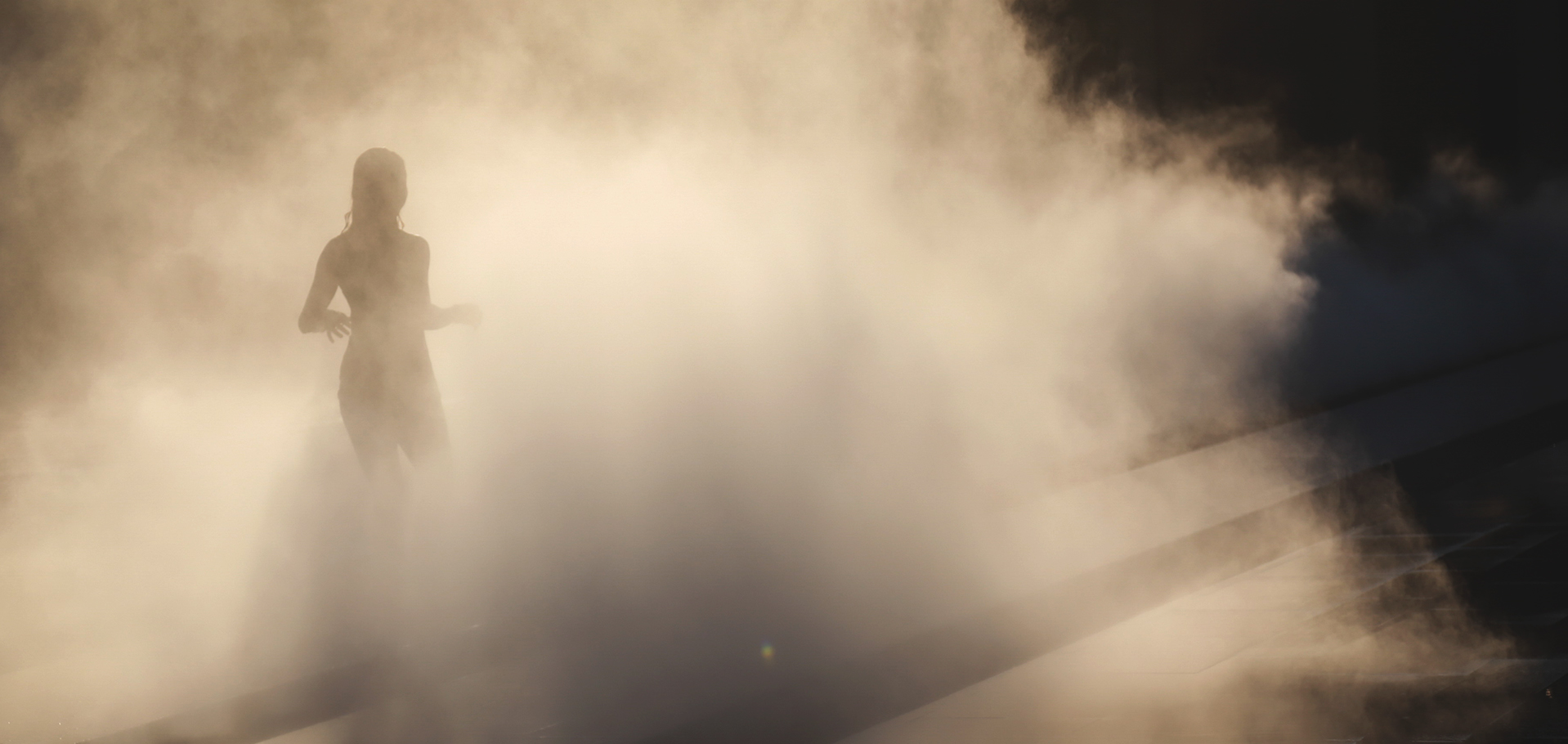April 30th, 2021
EVAPORATIVE COOLING
understanding water / water as a remedy / water properties
In our previous article we delved into the mechanisms and terminology related to the phenomenon of evaporation. Let’s now start mastering the concepts and cooling methods linked to it.
Adiabatic Evaporative Cooling: What Is It?
In physics, the term ‘adiabatic’ refers to a process or the transformation of variables such as pressure, temperature and volume – in our case the transition from the liquid to the gas phase – without any heat exchanges with the environment surrounding the system.
As the energy required to turn water from a liquid to a gas phase is gathered from air heat, a decrease of temperature will be detected in the environment closely surrounding the place where the adiabatic process is taking place.
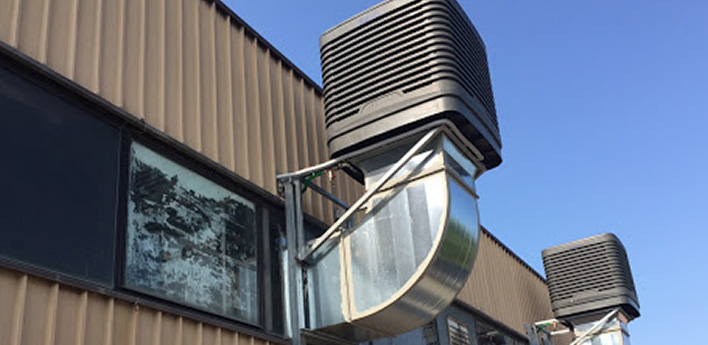
↑ A typical use of the principles of adiabatic cooling applied in interiors air conditioning.
Evaporative Cooling Through Nebulizers & Water Features
Evaporative cooling is therefore fundamentally an example of adiabatic process where the energy needed to make water evaporate is picked up from the air which is, in turn, affected by a decrease of temperature.
Within the purview of water fountains design such a cooling process can be obtained by resorting to high-pressure water pumps. These are in fact capable of generating the tiniest droplets (10 microns!), which are nebulized into the air.
Waterfalls too involve both a water nebulization process and an evaporation process. In particular, the latter is to be connected with the absorption of energy in the form of heat from the surrounding environment, as well as with the resulting decrease of temperature.

↑ Nebulizers at the Fontana del Cervo at the Reggia della Venaria Reale.
In order to better understand the process of cooling based on the evaporation of water coming into contact with air, we may think of the latter as a sponge: the air is indeed capable of absorbing – and somehow incorporating – the water that is nebulized in the form of vapor.
It is nonetheless to be remarked that the capacity of water to absorb vapor is inversely proportional to the amount of water that has already been “trapped” by the sponge, that is to its relative humidity.
Hence a low percentage of humidity (e.g. 30%) corresponds to a higher possibility for air to absorb vapor; under such conditions the evaporative process and the cooling down of the surrounding air become quicker, to the benefit of our well-being.
In more practical terms, the evaporative process therefore allows us to get more marked results and benefits in environments featured by a high temperature and contained humidity, with a decrease of temperature than can reach -15°C.
We’re also due to remind that the micro-nebulization of cold water DOESN NOT foster the evaporative cooling system’s efficiency, as the majority of the energy needed to evaporate water stems from the transition of phase from liquid to gas. Suffice it to think about the enormity of heat required to make a liter of water evaporate completely: well, it is that energy that is subtracted from the surrounding environment in order to dispel mist.
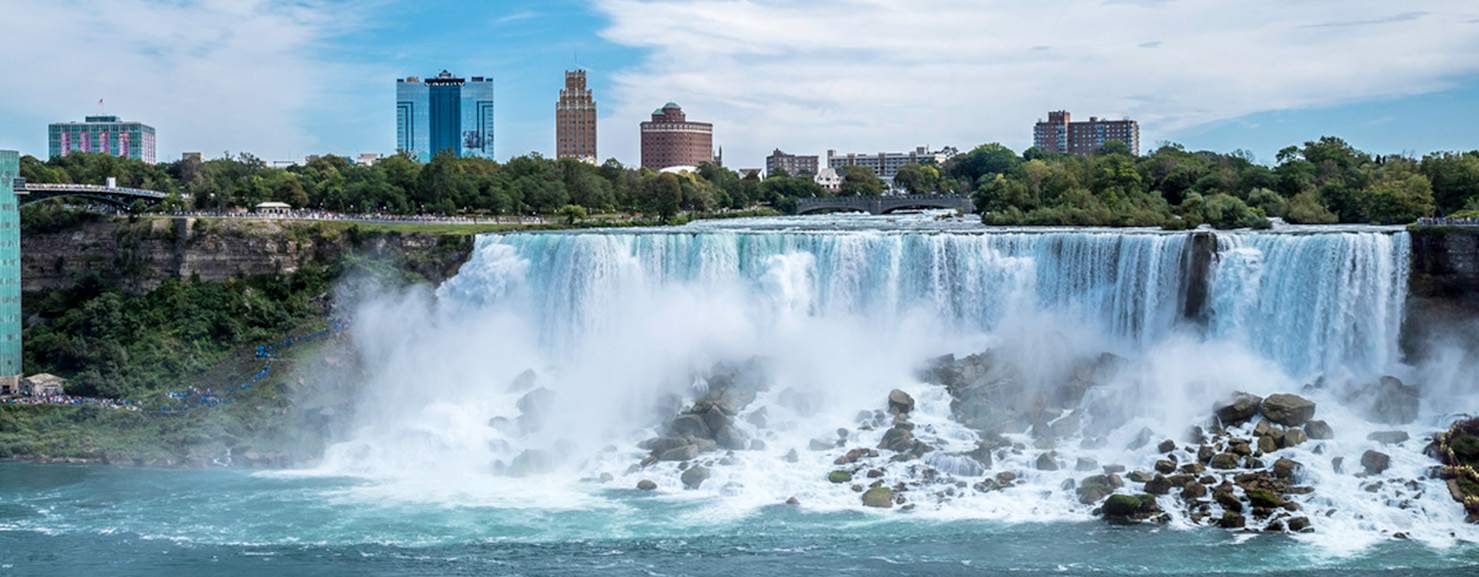
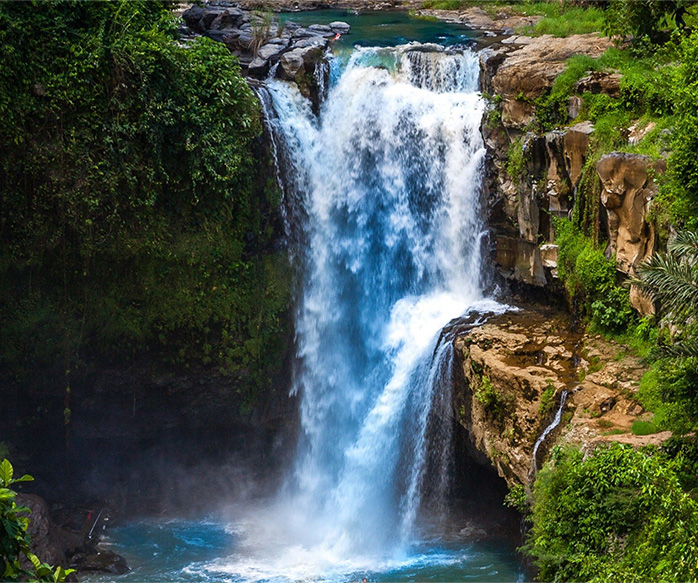
↑ Above: the Niagara Falls, one of the most famous natural waterfall complexes in the world. Below: the Tegenungan waterfalls in Indonesia.
Waterfalls & The Splitting of CO2
In the presence of a waterfall the effects produced induce a high oxygenation of water. This also applies to the most part of those cases where waterfalls are mimicked through the usage of water features, in the specific case where there are shallowly flooded surfaces with high temperatures connected with solar irradiance.
What happens specifically is that the water mass released from above interacts with the wall behind, then violently impacts the basin at the base of the waterfall – either natural or artificial.
This way, the kinetic energy acquired by water while falling is transformed into thermic energy and contributes to increasing the instability of the bonds that keep the liquid in balance.
At the same time, as ionic charges are produced and a high evaporation rate is kept into place, there is a loss of CO2 which affects the balance of the water’s pH and total alkalinity.
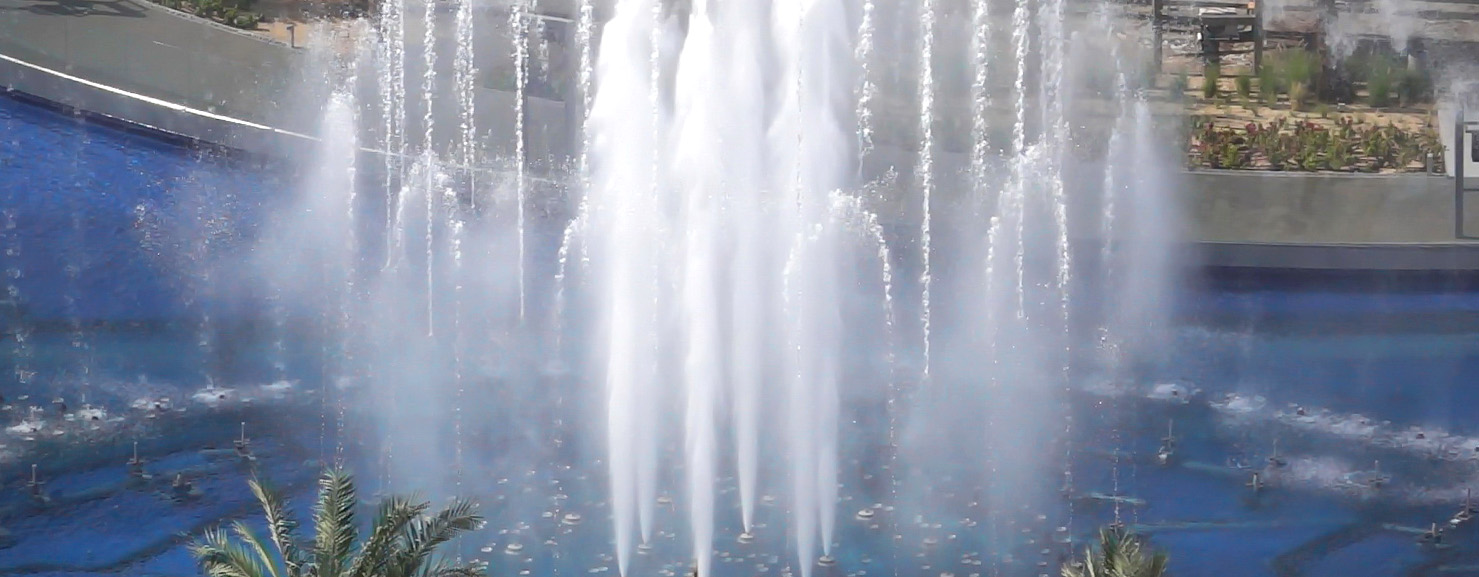
↑ The “Opera House Fountain” of the Cultural Center of Kuwait City
The equation which, according to what we’ve said, regulates the presence of CO2 in our water features is the following:
HCO3- = OH- + CO2
In this reaction, HCO3- carbonate breaks to form CO2 and an OH- hydroxide. Nonetheless, if on one hand the CO2 level in water is lowered, on the other hand the carbonate will react in order to compensate this loss. This will result in an increase of pH due to the loss of carbonic acid (H2CO3 = H2O+CO2), which normally helps pH remain low, and in an overproduction of hydroxide (OH-) which increases the pH.
At the same time, alkalinity will start to decrease due to the loss of calcium bicarbonate:
Ca(HCO3)2 = CO2+H2O+CaCO3
The increase of pH and the decrease of alkalinity are two parameters that have to be taken into account as fundamental distinguishing features between waterfall-like water features and those that are more similar to pools, where the balance of water remains basically stable.
In conclusion, it also needs considering that the loss of CO2 entails an increase in the formation of CaCO3 calcium carbonate; especially in waters with a moderate to high temperature, calcium carbonate has a low solubility and tends to settle on wet surfaces forming a definitely unesthetic white layer.

